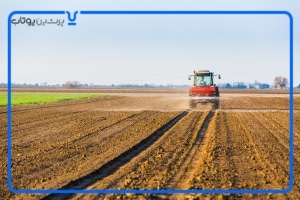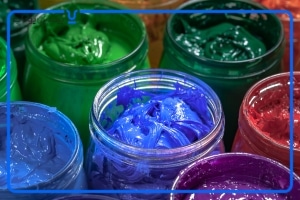POTASSIUM CARBONATE
Product Information
CAS Number:
584-08-7
Additive Number:
501
Chemical and physical data
Formula : K2CO3
Molar Mass: 138.2055 g/mol
Density : 2.43 g.cm³
Melting point : 891°C
Boiling point : Decomposes
Other Names
Potassium carbonate, Liquid
Potassium carbonate 15%
Potassium carbonate, 50% Solution
Carbonic acid, dipotassium salt, aqueous solution
Benfield V2o5
Pearl Ash
Vanadium Pentoxide 6%
Potash
Carbonic Acid, Dipotassium Salt
What is potassium carbonate?
Potassium carbonate (K2CO3) is a translucent and odourless organic alkaline solution or a white and odourless solid chemical compound that is available in crystalline granulated or powder form.
K2CO3 is also known as potash carbonate and is used in fertilisers, agrochemicals, heat-resistant glass, soaps, and in the manufacturing of other chemical compounds.
Uses Of Potassium Carbonate
Food
Potassium carbonate is widely used as an ingredient in cooking and food production, particularly in the cuisine of China and Southeast Asia. For example, it is used in Chinese hand-pulled noodles, grass jelly and moon cake. Some German gingerbread recipes require potassium carbonate in small quantities but these should only be executed by cooks trained to use it and who are fully aware of the dangers.
Potassium carbonate’s ability to form a strongly alkaline solution is put to use in a process known as ‘Dutching’. This is when natural cocoa powder undergoes alkalization in order to reduce its acidity and balance out the pH, thus producing a milder flavour. Dutch process chocolate forms the basis of most commercial chocolate production.
Turning to drinks, potassium carbonate is used as a buffering agent in the production of wine. This means that it is used to alter the pH and so produce a slightly different taste. The process requires chilling the wine prior to adding the potassium carbonate.
Glass
Glass manufacturers form a significant part of the potassium carbonate market, particularly producers of optical glass. As well as being highly heat-resistant, potassium carbonate is also able to boost the strength, transparency. Televisions screens írequire potassium carbonate.
Soap
Potassium carbonate has been used to create soap for hundreds of years.Nowadays, potassium carbonate is used to create very soft or liquid soaps that are able to generate suds in high mineral content water.
Agriculture
Potassium carbonate is often used as an ingredient in animal feed in order to combat the possibility of potassium deficiency . For similar reasons, it is also added to fertiliser and pharmaceutical products.
Elsewhere, potassium carbonate is used in fire suppression. It is particularly suitable for B class fires, which are those fuelled by flammable liquids, such as petrol.
Potential Risks of Potassium carbonated poisoning
Potassium carbonate is found mostly in glass and various types of soap, including hand soap or dishwasher detergent. There is no indication that this chemical may be carcinogenic or mutagenic, but it can be toxic if in contact with skin and eyes, swallowed or inhaled.
CONTACT WITH SKIN
When in contact with skin, potassium carbonate causes irritation, particularly after prolonged exposure. First aid procedures include removal of any contaminated items of clothing or shoes, followed by rinsing the affected area for 15 minutes and an emollient applied. In cases of prolonged contact, disinfection with an anti-bacterial cream may be necessary and it is advisable for the patient to seek medical advice.
CONTACT WITH EYES
Potassium carbonate is highly irritant to the eyes and associated mucous membranes. In case of prolonged exposure, it may cause permanent corneal damage, including loss of vision. The first step during first aid is to remove glasses or contact lenses and then flush eyes with cold water for 15 minutes. Due to the seriousness of the situation, patient must seek medical assistance.
INGESTION
If ingested, potassium carbonate causes irritation in the gastrointestinal tract, resulting in burns to the lips, tongue, mouth, oesophagus or even stomach. This causes vomiting and nausea, intense abdominal pain and, in extreme cases, difficulty breathing due to swollen glottis, or collapse due to a drastic drop in the blood pressure. If swallowed, it may help to give the patient water or milk. In this case, immediate medical assistance is required to perform an endoscopy to determine the extent of burns down the oesophagus and stomach and provide appropriate medical care.
INHALATION
Patients that inhale large quantities of potassium carbonate may experience coughing, difficulty breathing and chest pains. This is caused by irritation of the respiratory tract and its mucous membranes. In this case, patients should be removed to fresh air, and mouth-to-mouth applied if required.
PROGNOSIS
The prognosis depends greatly on the quantity of potassium carbonate, time of exposure and how quickly first aid was administered. Obviously, the more prolonged exposure to higher concentrations of this chemical, the more dangerous and extensive damage can be and more time for recovery needed. In cases of ingestion of high amounts of sodium carbonate, damage to the digestive tract.
Conclusions
This white salt is soluble in water. The production of potassium carbonate begins with potassium chloride. It is non-flammable and non-toxic, but it is a dangerous substance for the skin and eyes. Carbonate potassium has many uses such as the glass industry.








